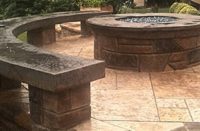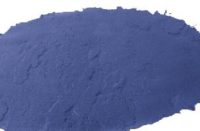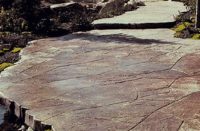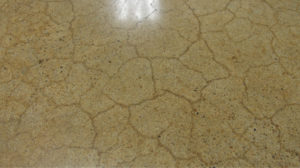Many years ago, one of my stamping customers said, “I know concrete cracks — I just don’t want to see any.” I agree. Most random cracking sends signals of negativity and those signals will not help when it comes to managing expectations.
So many experts and trainers address concrete crack control in articles and elsewhere, but few truly get to the heart of the matter from a buyer’s perspective.
Honestly, our decorative industry cannot use the old-age adage “all concrete cracks” and expect to compete with the ever-threatening paver industry.
Stamped concrete is the very foundation of today’s decorative concrete industry. Your ability to take a concrete canvas and add pattern and color separates you from most concrete competition. This ability also increases a customer’s expectations whether you, or they, realize it or not. Simply put, most customers will not accept a random crack running through patterned concrete, nor should they.
When we color and imprint concrete, our goal is usually to replicate stone, wood planks, tile, slate — the list is long and growing. Customers realize we’re using a hunk of concrete, but at day’s end they expect the canvas of concrete to resemble a replicated surface full of colorful texture.
Most companies installing stamped concrete use a combination of past performance, depicted in pictures, and small stamped samples when selling new work. The problem is, most pictures or samples fail to accurately represent the necessary steps to control cracking.
Cutting and grooving
As with any concrete surface, your most obvious way to control cracks is to cut control joints. They reduce the risk of random cracking by forcing the concrete to crack in vulnerable areas.
You must consider two things related to crack control prior to placing concrete at your next stamped project — your plan must include where you’ll place breaks in the concrete and by what means. The stamping pattern and slab design must play a vital part in this prearranged configuration.
Nothing will make an interlocking stamp pattern look less natural than a straight control joint running through it. However, in some cases this will be the lesser of two evils. If so, this disclosure and an explanation must be made to your customer prior to placement. Remember, this is their project and money we’re working with.
In general, early-entry cutting is hands down the least noticeable and most efficient way to control cracks in concrete. This method allows a finisher to place and saw-cut concrete on the same day. Early-entry cutting will work with stamped concrete too, but with one big complication. With most stamped concrete, same-day cutting leaves marks or prints on the freshly stamped surface. Because of this risk, some professionals who use an early-entry method to control cracks in stamped concrete wait a day before cutting. The risk of cracks appearing in the meantime is real and must be considered.
Noninterlocking stamp patterns, like texture patterns, look perfectly fine when you use a wet-tooling method to control cracks. A finisher “wet-scores,” or “deep-grooves,” the concrete by tooling a joint with a groover while it’s wet, just prior to the stamping process.
In my opinion, tooling before texture stamping actually enhances the work by adding an appealing visual element while functioning as a source of controlling random cracks. However, the opposite is true with interlocking patterns — tooling does not look good with them.
Random cracks in concrete you just placed often start small and almost unrecognizable. A good way to minimize such a crack is to relieve it by deepening the nearest expansion or saw-cut joint. This may require deepening the joint beyond the typical 25 percent of slab thickness used as our industry standard. You will be surprised how often this will freeze a random nearby crack from growing larger and, more importantly, more noticeable.
Again, this decision is one you and your customer should make well before concrete placement. My sales team usually incorporates the saw cut or scoring decision during the color and pattern presentation.
Talk it out
A stamped concrete professional can do nearly everything else flawlessly and still lose a customer’s faith because of random cracking. “Random cracks” by this author’s definition are any cracks unplanned. Some folks will have few problems with random cracking, but some will ask for monetary compensation of some kind. My advice is to do everything possible to make this a nonissue.
Random cracks cast doubt on your ability to effectively place quality stamped concrete. They make you and your concrete supplier look bad. And the fact is, you can do everything within your power and still occasionally experience random cracking. There is no need to ignore this possibility, so why not disclose this risk to each customer? Explain to each customer why you’re taking proactive steps to control cracks, and then make them part of the plan for crack control. Show customers the options you offer to control cracks and carefully explain the benefits and risks of each method. Customers, architects and builders are less likely to doubt your credibility if you show such diligence and effort.
Knowledge is a wonderful thing. Today’s decorative concrete end user understands our trade far more than customers did when I started installing decorative concrete more than two decades ago. Please don’t underestimate your next customer’s ability to play a part in the decisions aforementioned. At day’s end, the group effort to control cracks makes you a better decorative professional and benefits the decorative industry as well.















